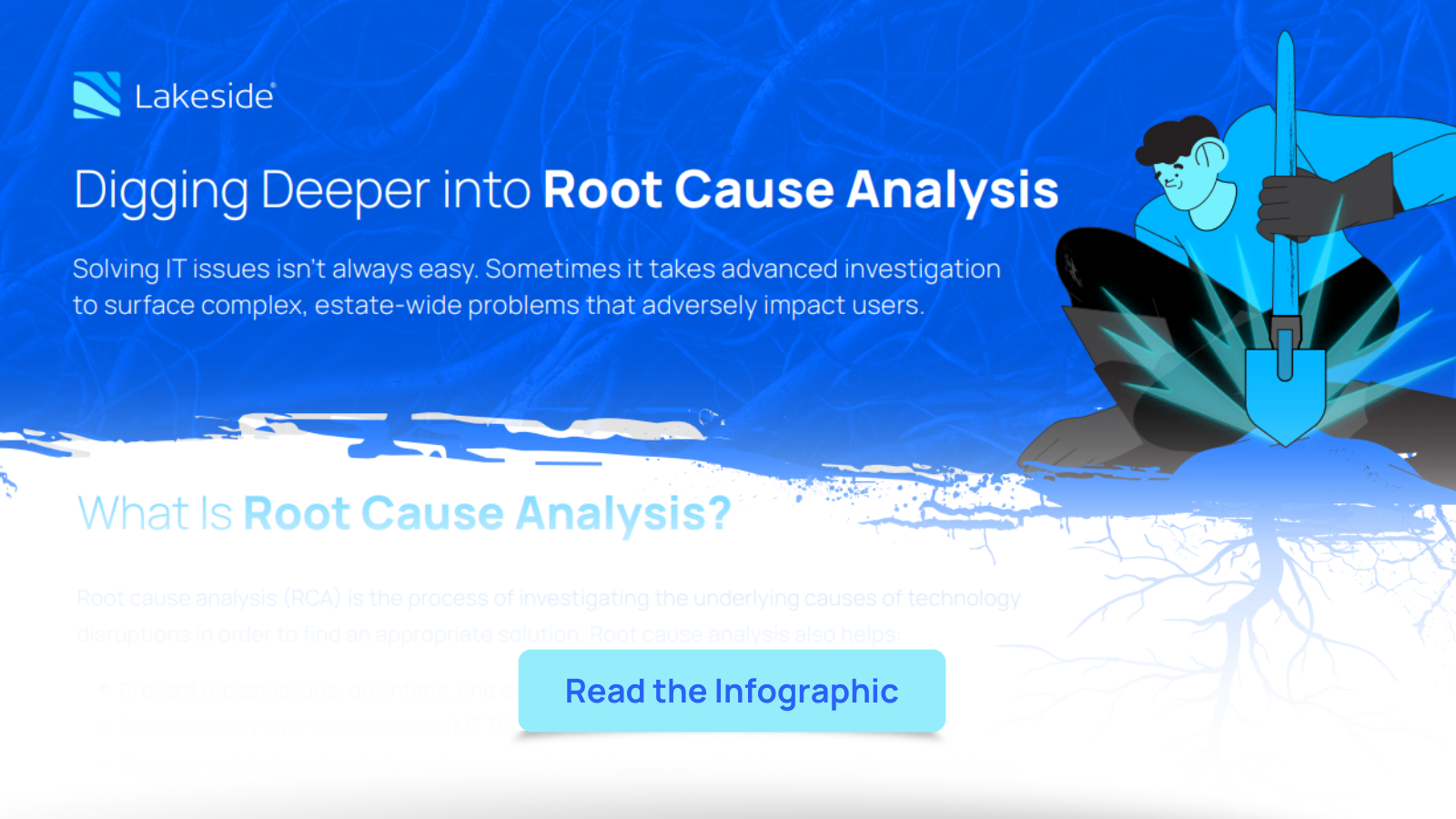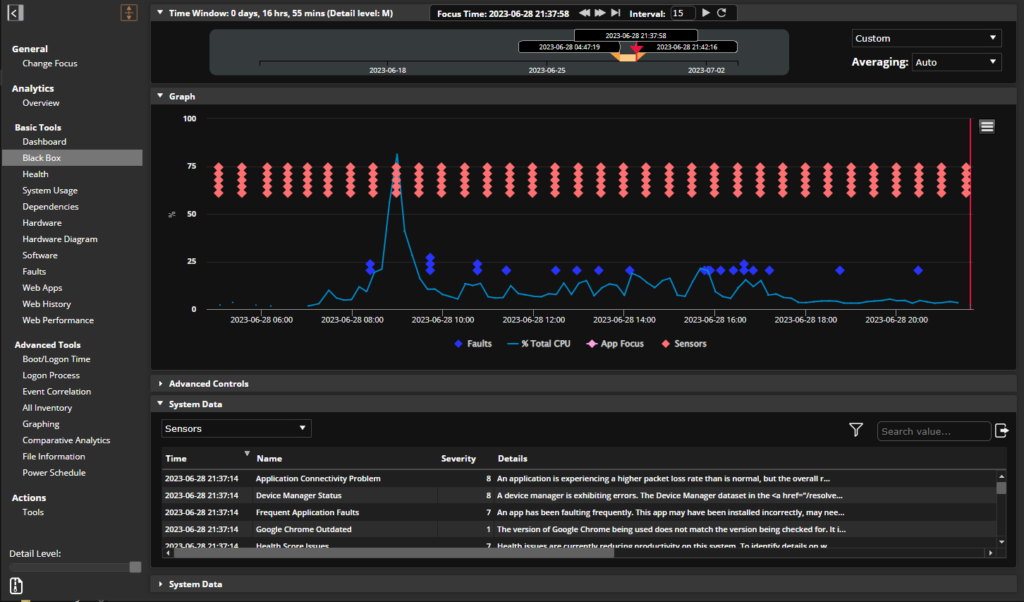
Deep telemetry, AI-powered analytics, and other key features are critical when evaluating and investing in root cause analysis tools
This is the second in a three-part series exploring ways IT can upgrade its root cause analysis strategy, and criteria for evaluating and deriving the most value out of RCA tools. Learn more by reading the first part and third part, or by visiting Lakeside’s root cause analysis page.
With efficient and thorough root cause analysis (RCA), organizations can more quickly troubleshoot IT issues, minimize downtime, and improve the digital employee experience (DEX).
And that’s key to business goals, too. Quicker incident resolution leads to reduced IT overheads and greater productivity. In fact, most employees believe they could be 18% more productive if IT could troubleshoot promptly and continuously maintain devices, according to Lakeside Software’s DEX research.
Before that can happen, though, organizations need the right kind of tool to help IT adopt a modern RCA strategy.
E-BOOK
Deeper RCA for Modern Digital Workplaces
Steps to Root Cause Investigation
As a method used in areas that require problem-solving, RCA is critical to IT service management (ITSM). RCA helps IT to identify why an incident or failure occurred in the first place by investigating its causes rather than its symptoms.
RCA usually involves the following steps:
- Discovering an issue.
- Gathering data about the issue.
- Detecting the root causes.
- Identifying ways to solve the incident.
- Prioritizing fixes.
- Taking measures to prevent incidents from reoccurring.
More traditional approaches to root investigation focus on an individual incident to its core rather than taking a holistic view of the IT estate. However, in order to attend to the demands of complex IT environments, root cause analysis has to become more sophisticated as well. Modern solutions are able to provide a complete, contextual understanding of what might have caused the incident.
To that end, here are some of the features an RCA tool should include in order to provide enhanced diagnostics and remediation:
1. Deep Data Collection for Comprehensive IT Visibility
Effective root cause investigation starts with full visibility into the entire IT estate. Organizations need to capture a broad amount of data in real-time for continuous monitoring of digital environments, from endpoint devices and users to SaaS and cloud infrastructure.
With this deep data, it’s possible to identify nascent problems. Your RCA solution should be able to:
- Alert IT when specified thresholds are reached, pointing the events to a root cause.
- Indicate potential fixes before users notice or the issue escalates.
This can help drastically reduce the number of help desk tickets IT receives, and also enables incident resolution at the lowest level of support level. But equally important is having historical data and trends available in order to correlate events, find patterns, and predict future incidents.
2. Artificial Intelligence and IT Automation for Actionable Insights
Artificial intelligence for IT operations (AIOps) is now a foundation of modern root cause analysis. Machine learning and data analytics are transforming help desk operations, driving proactive IT and better digital experiences.
These tools analyze and contextualize a rich amount of data from different sources to:
- Sort through all the data.
- Deliver meaningful insights.
- Make prioritizations based on impact.
- Automate processes and tasks.
IT automation accelerates root cause analysis because the investigation does not rely on manual efforts. After all, rich data collection is not enough to efficient resolution without the ability to analyze data and correlate events to find patterns.
3. Different Root Cause Use Cases
Organizations should look for tools that take a proactive approach to incident remediation. Some solutions focus on a single root cause analysis, such as application performance or device failure. AI-driven RCA not only enables faster troubleshooting but also event prediction and automated resolution. Look for an RCA tool that is able to trigger alerts and responses.
BLOG POST
Strategies for Stellar Root Cause Analysis
AI-based RCA Is the Future of Incident Remediation
Lakeside’s report on the future of digital workplaces indicates that, for 92% of the surveyed employees, IT issues they have experienced could have been avoided or prevented with the right tool. The study also revealed that, for IT professionals, root cause analysis is the most valuable use case for digital experience monitoring.
Taking an AI-based approach to incident resolution can enable a proactive IT strategy that drives service desk efficiency and a better digital employee experience. This modern perspective on root cause investigation is a better fit to the needs of complex IT environments because it leverages deep telemetry data collection and powerful diagnostics to resolve estate-wide issues.
That’s why it’s important to look for a platform that includes automated root cause analysis.
Get the Best Root Cause Tool for Your Organization
Learn more about the benefits of automated root cause analysis. Request a demo.
Subscribe to the Lakeside Newsletter
Receive platform tips, release updates, news and more




